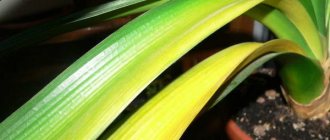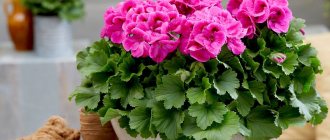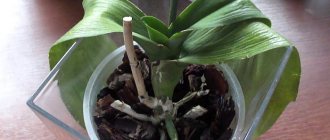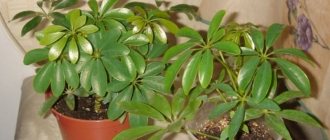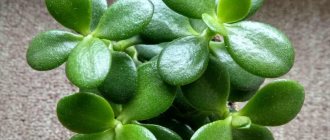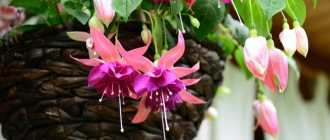The aristocrat of the home greenhouse, the orchid can bloom almost all year round; no one else has such a riot of colors and variety of forms. Most orchids, although seemingly fragile and pampered, actually turn out to be very hardy and resistant to growing conditions. With certain care, even such resilient flowers begin to hurt. If the leaves of an orchid turn yellow, it means that something in the conditions of its maintenance does not suit it. You need to understand what is preventing this exotic flower from living and take urgent measures to eliminate the causes of yellowness.
The most noticeable sign of trouble in an orchid is yellowing of the leaves. There are several reasons for this process:
- leaf aging;
- insufficient watering;
- excess substrate moisture;
- too much sun;
- lack of lighting;
- nutritional errors;
- pests and diseases.
We will consider each reason in more detail.
Foliage falls off after yellowing
The leaves may wither, then turn yellow, and soon fall off completely. If, after the yellowing of the leaves, the main cause is not eliminated, then soon, in order to survive, the plant will strive to preserve its roots and core; it simply will not have the strength to maintain the leaves. The orchid will have to get rid of its foliage so as not to die.
Common reasons for the falling leaves of popular home orchids such as phalaenopsis, dendrobium, and cattleya are lack of light and moisture . Often, especially novice orchid growers, taking into account the fact that the orchid does not require frequent watering, may completely forget to check the condition of the substrate in time and, when necessary, moisten it.
A similar situation arises with illumination . It is known that orchids love the sun; they are placed on windowsills in direct sunlight, hoping that the orchid will grow magnificently and beautifully, but this is a bad idea: they are as destructive for them as a lack of light. The leaves of orchids in direct sun quickly become depleted, turn yellow and fall off .
- The orchid has dropped all its leaves - causes and treatment
- Why do orchid leaves wither and what to do?
What to do to save the plant
The orchid got sick. The stem is turning yellow, what should I do? To prevent the plant from dying, you need to determine the causes of the problem. Take a closer look at the conditions under which the flower is kept. Compare them with the recommended ones. There are no trifles in caring for an orchid. Humidity, temperature, daylight, substrate, and watering are important.
Correct any discrepancies. Reduce watering. In the case of an orchid, it is better to water a sick plant less, because excess moisture is the cause of most problems with it.
Carry out spraying in accordance with all rules. Perpendicular to the trunk or from bottom to top. Make sure that water does not flow into the axils of the leaves. Do not spray at temperatures below +22. Add Epin or succinic acid to the water.
If you suspect rotting of any part of the flower, then proceed immediately to replanting and pruning. Remove any rotting parts, whether leaves or roots. Treat the entire plant with antifungal drugs, sprinkle the cuttings with charcoal, and plant in a disinfected or new pot with a completely new substrate. Avoid watering for 10-14 days.
If the peduncle of an orchid has dried out, then nothing needs to be done.
Why do leaves turn yellow after transplanting?
Repotting an orchid into a new pot is always stressful. If the leaves begin to turn yellow after transplantation, you need to see if the core has been damaged . It is easy to damage, especially for beginners.
It is also worth checking the purity and quality of the substrate . If the substrate was collected independently, it will require careful preparation (rinsing, drying) before use.
Also, after replanting, you should not feed the flower with fertilizers, but it is better to leave it alone for a couple of weeks.
When and how to replant an orchid correctly
Will it bloom?
It is important to consider the following factors:
- After illness or attack by parasites, a flower may bloom, but this will take away its last strength.
- A combination of stress factors can lead to the death of a plant.
- It is better not to stimulate the appearance of buds with the help of special fertilizers, but to wait for the next favorable period for flowering.
If the yellowing of the leaves was insignificant, then flowering is theoretically possible, but the orchid needs to be prepared for it. Regular proper care is important.
Attention! Flowering stimulants, as in the previous case, cannot be used: the plant must “want” to bloom on its own. They are only permissible if the leaves have dried out due to the natural aging process.
The stem turns yellow
If you notice yellowness on the stem, you can add a couple more to the main reasons for yellowing:
- Mechanical damage. Any injury, fall or break can lead to unpleasant consequences. This should be kept in mind, especially if there are animals or small children in the house. It is possible that an indoor orchid may fall under its own weight. The substrate in which the orchid lives is usually light, but the leaf mass, peduncles and flowers on them (during the flowering period) are heavier. If the plant is not immediately helped and the damaged area is not treated with an antiseptic, the stem will turn yellow and gradually die.
- Sunburn. Not only the sun can burn an orchid, but also artificial lighting. If you choose the wrong phyto-lamps or install them too close to the plants.
The recommended distance between the phyto-lamp and the orchid is at least 20 cm
Methods of treating an exotic beauty
Drying leaf blades
Why do clerodendrum leaves turn yellow and fall off?
The leaves of the orchid have turned yellow, what should I do? Experienced flower growers answer this question that again it all depends on the reason. So, if a leaf dries out and turns yellow according to the natural cycle, then the leaf plate cannot be touched. Despite her condition, she continues to nourish the plant. You just have to wait, the leaf should dry and fall off on its own.
It’s another matter if drying leaves indicate more serious problems, such as infections.
In this case, a broad-spectrum antibiotic should be used. A fungicide would be suitable, for example:
- Alirin;
- Mikosan;
- Copper sulfate;
- Bordeaux mixture;
- Quadris, etc.
It is necessary to treat the plant following the instructions in the instructions. The previously dried leaf is removed.
Signs of infection
Restoration of yellow leaves
If the leaves have not dried out at all, and the reasons are not infections, but improper maintenance, then restoring the plant in this case is not difficult.
Lighting
Among the main reasons for yellowing leaves is lack of lighting. In this case, the plant is placed in a bright area, preferably on the east or south side of the apartment. A little shading is required. In autumn and winter, additional lighting is needed in the form of fluorescent lamps.
Elimination of solar activity
If chlorophyll is no longer produced due to sunburn, the plant is moved to another location. If the sheet is severely damaged, it is removed.
Note! Artificial lighting also needs to be installed correctly. Lamps should not be placed at a distance closer than 15-25 cm relative to the plant.
Organizing proper watering
If the plant does not receive enough water, its roots begin to dry out, measures should be taken. It is best to remove the flower from the container with the substrate and immerse it in a container of warm water. Immersion occurs only in the root system. The green mass should not be wetted.
It is also possible to save a plant that, on the contrary, has been flooded. To do this, the rhizome is removed from the pot and inspected for putrefactive damage. If they are not there, then the roots are slightly dried and transplanted into a pot with new soil.
Working with fertilizers
If the plant is overfed, it is removed from the pot, the roots are washed in warm water and replanted in new soil. After 14 days, it is allowed to apply a low-concentration combination preparation for orchids. If the leaves turn yellow due to a lack of elements, then fertilizing should be organized.
Transfer
An important condition for the health of an exotic beauty is that the pot has the optimal volume. Yellow leaves may indicate the need for replanting. In this case, the plant is transferred to a larger container.
To give a flower health, it must be replanted on time.
Treatment of rhizomes
The flower will disappear if the rotten roots are not treated. First, the roots are inspected. Brown color and fragility indicate approaching death. The plant must be treated promptly:
- The roots are carefully cleaned from the substrate by hand.
- Take a sharp knife. It is disinfected with an alcohol solution.
- The fibrous, rotten, dead areas of the rhizome are cut off with a knife.
- All places touched by the knife are treated with brilliant green. You can use ash instead.
- Next, the plant is transplanted into new soil.
- Watering in the first 3-5 days is prohibited. It is best to place a basin of water nearby. Water will humidify the air around the exotic.
Natural yellowing
The leaves of all plants, including orchids, simultaneously contain several natural pigments. In addition to chlorophyll, they contain carotenes and xanthophylls. Chlorophyll provides the plant with organic substances through the chemical reaction of photosynthesis. In the light, the process of its destruction and restoration occurs continuously. Therefore, the green color of the leaf always predominates. But as a result of certain processes (internal and external), the green pigment ceases to be produced. The leaves begin to show yellow, orange, or even brown colors.
The leaves of lilac and alder do not have any coloring substances other than chlorophyll. Their leaf cover falls green in autumn.
Why do the lower leaves of phalaenopsis turn yellow?
Each orchid variety has its own leaf lifespan - from one to 3 years. For example, in phalaenopsis (Phalaenopsis), yellowing of one or two leaves in the lower tier is observed every year. The earliest leaf becomes yellow evenly, from tip to base. This process lasts about 2-3 months and eventually the yellowing leaves fall off and are replaced by new ones.
Phalaenopsis orchid: home care rules
This process completes the next development cycle. It is not a cause for concern provided that other external signs indicate a healthy state of the plant. The leaves are elastic, flowers with buds (in case of flowering) - without wilting. Aerial roots are light green or silver in color, ordinary in appearance.
The appearance of a root baby also forces the plant to redirect all nutrients to its development. For this reason, leaves may begin to change color.
Orchid babies: stimulating the appearance and transplantation
How to recognize why a plant disappears?
The main signs of violations in care and diseases are indicated above, but sometimes they are not enough to determine the cause of wilting. Let's take a closer look at the symptoms and related problems.
Why does it turn white and wither?
Leaf blades turn white mainly due to powdery mildew. This fungus sucks nutrients from the plantings and dries out the leaves. Powdery mildew can be identified by a white coating, which is difficult to separate from the flower, and by an unpleasant sour smell.
Important! A light coating also appears when thrips attack. You can detect them by points using a magnifying glass. Transparent insects are invisible to the naked eye.
Why do yellowed leaves fall off?
There are many reasons for leaf fall:
- lack of potassium;
- natural renewal of the plant;
- fungus or bacterial infection;
- stress after a sudden change of environment.
Note! Since the falling of leaf blades is too common, a general symptom, the grower can only look for other symptoms in order to diagnose the plant.
If all the leaves have fallen
Some plants, in particular sympodials, completely change foliage after flowering. When purchasing, you need to check with the seller whether the selected variety is prone to this. But this rarely happens; much more often, the reason for all the leaves falling off is improper care.
Due to parasites, complete shedding of foliage rarely occurs. The following can affect an orchid:
- root rotting;
- lack of moisture;
- critical burn;
- lack of fertilizers;
- bacterial infection.
If only the top ones turn yellow
If only the upper leaf blades turn yellow, we can safely talk about excess light. The plant either begins to shed the affected leaves or retains them, but then brown spots appear on the plates - severe burns.
How to save an orchid if all the leaves have turned yellow
In most cases, the color changes for completely different reasons. Unexpected or massive yellowing of phalaenopsis leaves is always alarming. It is this fact that requires a quick response.
Rapid, sudden wilting with yellowing of the stem and more than 2 leaves is a sign of a serious problem.
In the vast majority of cases, the cause of yellowing of leaves lies in an error and lapse in care. Common correctable care miscalculations:
- improper watering and fertilizing;
- excess or lack of lighting;
- hypothermia;
- damage to the growing point.
Less commonly, the cause of damage, which leads to wilting and even death of orchids of different varieties, is bacterial and fungal infections and pests.
The first thing to do is to establish the cause. Carefully examine each leaf, and depending on the signs and degree of yellowing, make decisions to eliminate the problem
Basic rules for growing orchids at home
Aging of orchid leaves is a natural process
Each leaf has its own life cycle, upon completion of which the color of the plate changes to yellow and it dies. As a rule, this happens with the lower tier of leaves. If the rest of the plant is in order, there is no point in worrying: this is an absolutely natural process.
Figure 1. Natural yellowing of leaves
It is important to note that age-related yellowing depends on the variety. Thus, in varieties of phalaenopsis, cattleya and paphiopedilum, the color of the lower tiers changes, and in dendrobiums the color of the upper leaves may also change. In addition, there are cases that after flowering has completed, the entire plant completely sheds its foliage.
Plant age
Most orchids bloom only in the second or third year after planting, although by this time the plant already has several fully formed leaves. The natural aging process affects only a few leaves, and the culture itself retains a very attractive appearance.
If the yellowing is due specifically to the age of the plant, no special actions need to be taken: the leaf will gradually dry completely and separate on its own. But there are other factors that can cause yellowing. Most of them are associated with improper care of the crop, so to maintain the health of the plant, you need to determine exactly what caused the pathology and review the rules for caring for the flower.
Excess moisture
Leaves can become diseased as a result of overwatering. Often - due to an incorrectly selected regime. Orchids love moist soil, however, the amount of moisture must be metered. Epiphytes use the substrate mainly for support and fixation, and not for nutrition and vital functions. In case of regular waterlogging, dark wet bark is visible through the transparent pot, and rotting roots are noticeable. Possible fungal growth. The container with the plant is heavy in weight, and its walls are covered from the inside with drops of water.
It is even more harmful when the plant has been flooded with water after a prolonged drought.
The leaves turned yellow and lost turgor - the first sign of trouble. The orchid should immediately stop watering. The plant can be replanted and limit itself to simply spraying the upper layers of fresh soil.
Abundant moisture makes it difficult for air to reach the root system and leads to its rotting. The nutrition of the leaves becomes insufficient, they begin to turn yellow and then die.
If almost all the foliage has turned yellow and darkened roots are visible, the process has gone too far. The orchid must be separated from the base, and the damaged parts of the plant must be completely removed. If there is at least one healthy root left, try to revive it. To do this, attach the orchid to a tree support with coconut fiber and place it under a transparent cover in a place protected from direct sun. The care process during this period consists only of lightly wetting the support and treating the leaves with a slightly damp swab.
Trimming
A faded orchid must be pruned according to the rules so as not to destroy the plant.
When is it time to prune an orchid?
The time from the beginning of October to November inclusive is considered the best period for carrying out this procedure, and it is suitable for almost any type of this wonderful plant. But exotic species (artificial hybrids) are pruned only in the spring, from the first days of March until the end of the month. The name of the flower indicates whether it is a hybrid or an original variety.
Therefore, when purchasing a phalaenopsis for yourself, be sure to pay attention to the name (or write it down) because its entire future life in the house will depend on it.
Using tools when pruning
Oddly enough, but metal scissors or simple garden pruning shears - pruning shears - are better suited for this.
Be sure to disinfect the instrument you decide to use with a solution of ordinary bleach. Try not to trim with a knife, because you can easily accidentally damage the leaves.
A faded orchid must be pruned according to the rules so as not to destroy the plant.
Pruning rules
First of all, carefully examine the flower, check for dormant buds from which children or new flowers can grow.
- In order for the phalaenopsis to bloom again, you need to count down three dormant buds and about 10–15 mm above the last one and cut off the peduncle there. Please note that this pruning method does not have a 100% guarantee that this flower stalk will produce buds or baby buds.
- In addition, if the peduncle is cut off from the top in this way, then there is still the possibility of a flower appearing, but a new stem is unlikely to grow, because the plant will use all its resources to support the old stem.
Cutting off the entire peduncle
A yellowed or completely shriveled stem must be cut off entirely, leaving only a small piece no larger than 20 mm in size. Do not spare the cut flower stalks, because soon the phalaenopsis will again delight you with its beautiful flowers.
Orchid after pruning
Caring for such a phalaenopsis is no different from usual. You just need to fertilize the plant with fertilizer to accelerate the growth of new leaves and the appearance of flowers. If the plant is resting after flowering, then you should not add fertilizers during this period.
Under-hydration
Incorrect watering technique will lead to the opposite situation - lack of moisture. Wetting the top part leads to the fact that the moisture either does not reach the roots or is distributed unevenly. The roots become white and inelastic, the lower leaves show signs of wilting. In this case, you need to water the plant using the immersion method. In summer, if necessary, do this more often.
Orchids are not suitable for hard water with a high content of mineral salts. Their presence is indicated by a whitish coating on the plant. Transplantation is only permissible for non-flowering plants. When blooming, you can try flushing out excess salts by repeated immersion in warm filtered or distilled water.
How to properly water an orchid | watering methods and rules
Improper plant care
There are many factors for the appearance of yellow leaves on an orchid. This may be due to both natural processes and plant diseases. However, most often yellowing is caused by violations of the rules of care.
Orchid is a very sensitive plant and quickly reacts to any negative factors. Yellowing of leaves can result from:
- violation of the irrigation regime;
- low quality of water used for irrigation;
- lack of light;
- wrong approach to feeding.
Violation of the watering regime
The health of the leaves directly depends on the condition of the root system. Violation of the watering regime is the first thing you should pay attention to when yellow leaves appear on an orchid.
Yellowing can result from:
- excessive watering;
- overdrying;
- excessive water hardness.
With frequent and abundant watering, the soil does not have time to dry out. Stagnant water prevents normal soil permeability. As a result, the roots begin to rot, and the process gradually moves to the neck of the plant. At the same time, the leaves lose their natural color, become lethargic, become covered with wet spots and die.
Reference! If the problem is not corrected in time, the root system will be irreversibly damaged. It will not be possible to save the plant.
With a lack of moisture, yellowing of the leaves is observed, but unlike overmoistening, they do not become covered with wet spots. Hard water can also cause yellowing. Over time, the soil becomes overloaded with salts, and the plant cannot take enough nutrients from it.
Lack or excess of light
Lack of sunlight causes the leaves and aerial roots to gradually lose their bright, rich color. An excess will also not benefit the plant.
With too much or too little light, the leaves become:
- sluggish;
- lifeless;
- acquire a yellow color;
- die off.
Sunburn
Sunburn may remain on the leaves, causing them to die. It's easy to spot a sunburn:
- a yellow spot appeared on the leaf blade;
- the affected area becomes dry;
- The burn turns brown over time.
Reference! The vast majority of hybrids do not tolerate sunlight well.
Errors when fertilizing
You should be very careful when feeding orchids. Even minor violations of the rules for applying fertilizers can lead to the plant losing its decorative qualities.
Flower growers make the following mistakes:
- lack of fertilizers;
- excess feeding;
- application of fertilizers that are not suitable for this variety.
Lack of feeding is not too dangerous for the orchid, but it can still cause the plant to lose its beauty. A lack of nutrients can be determined by the appearance of yellow spots on old leaves. Young growth draws out all the nutrients, and the plant loses old foliage. Yellowing begins at the top of the plate, gradually descending until it affects the stem.
An excess of fertilizing is typical for flowers from the store. To give them beauty, sellers add a lot of fertilizers and growth stimulants to the soil. After the purchase, the new owner also strives to feed the new flower. Signs of overfertilization begin to appear approximately 6-8 months after purchase.
Reference! High calcium levels can be easily identified by yellowed and wrinkled leaf tips.
“Overfeeding” with additives
Excess fertilizers and improper selection can also cause oversalting of the substrate base. A store-bought flower grows well at first and even produces new flower stalks. And after a few years, it may show signs of exhaustion - limp yellow leaves. Bringing a diseased plant back to health will take time and effort.
The orchid recovers very slowly. Sometimes the resuscitation process takes 2 or more years.
A transplant will not help in this particular case. Tropical beauty undergoes quarantine. For the first six months, supplements are completely excluded. Then you can start fertilizing 1 or 2 times a month. First - with a special fertilizer for orchids, then - with nitrogen for increasing leaf mass. Only after complete recovery can you add a flowering-stimulating potassium supplement.
- Fertilizing for orchids at home: fertilizers and feeding rules
- Garlic water for watering orchids
- Succinic acid for orchids: rules of preparation and use
What is the danger to the plant?
Of course, when symptoms of yellowing of the trunk appear in a very young orchid, then the reason for the old age of the flower disappears by itself. In such a situation, it is better not to delay, but to react immediately to the alarming sign.
After all, if you do not provide immediate assistance to a sick plant, the consequences are fraught with:
yellowness of all green masses;
- drying of foliage and peduncle;
- violation of general development;
- growth cessation, lack of flowering;
- deterioration of condition due to infectious and viral diseases;
- death of the plant.
Mistakes in choosing the degree of illumination
Orchids with dense, leathery leaves love adequate moisture and bright color. The lack of these factors does not immediately affect their development. They can grow on a shaded windowsill for a year or two. And then suddenly they begin to shed their leaves and acquire a yellowish tint.
So that such phenomena do not come as a surprise, flower growers who are lovers of exotic plants need to understand the conditions under which they are kept. Light-loving lalias, Cattleyas and their hybrids require direct sunlight and even the inclusion of additional lighting. For plants with light green leaf color, excess light may be unsafe. For example, Paphiopedilum does well in diffused light and partial shade.
More often, a change in the color of the leaf cover occurs with excessive lighting. If sun exposure is prolonged, burn spots with brownish bald spots appear. A yellow border and depressed yellowish spots appear on several leaves at once. To protect the orchid, you should move it to a cool, less lit place (or shade the window), stop watering, and turn on the humidifier.
The resulting leaf defect cannot harm the development of the flower as a whole, but it will no longer be possible to get rid of the burn. In the future, you can cut the leaf or wait until it comes off on its own.
Prevention
In order for your flower to remain healthy and delight you with its beauty and attractiveness all year round, you must follow simple preventive measures:
- Regular spraying with warm water will help prevent drying out and the appearance of pests.
- Alternate watering through a tray and by immersion in a container of water.
- You should not cut the peduncle after flowering; you need to wait until it dries completely.
- When replanting a flower, it is better to use a purchased substrate - it does not contain pathogenic microflora and is enriched with all the necessary microelements.
- To avoid drying out the surface of the earthen coma, cover it with a small layer of sphagnum moss.
- It cannot be replanted during the budding and flowering phase, so as not to destroy it.
- An orchid that is fading should be moved to a cooler room, reduce watering and provide moderate humidity. In such conditions, it will fully survive the dormant stage without loss of decorativeness.
Core rotting
Epiphytic plants have a single, constantly growing stem. If sprayed carelessly, moisture stagnates in the axils and causes rotting of the upper leaves. Following them, the stem and roots suffer. Rot often starts in the hearth.
If the leaf begins to turn yellow from the base , this is an alarming sign. You need to carefully examine the entire plant. Rotten roots, unlike healthy green ones, are earthy in color and soft. All of them should be removed. The most frightening situation is when practically nothing remains of the roots. But if there is at least one, we can hope that the orchid will grow again.
The cause of root rot may be hypothermia during transportation to points of sale.
The wood base needs to be boiled for 30 minutes, the pot should be washed and disinfected. All open sections must be sprinkled with ash or crushed activated carbon. Untreated cuts are a gate through which bacteria and fungi freely penetrate inside.
It is advisable to treat the plant with a double dose of phytosporin. To do this, immerse in the solution for 2 hours, capturing the root neck. Then it should be transplanted into the prepared mixture. Can be covered with a plastic bag and placed in a warm, shaded place for rooting.
What to do if the growing point of an orchid has rotted, how to revive it
Other reasons and important details
Stress is an important factor in the formation of flower diseases.
Having discovered that the beauty has begun to turn yellow, you need to remember whether there have been any changes in care recently. For example, was there a transplant, or did a new neighbor appear on the windowsill? If the answer is yes, you just need to return the flower to its original conditions or wait a little.
Yellowing of leaves can also be the natural death of an old leaf that has become obsolete. In this case, simply carefully remove the sheet completely.
In this article, we discussed the reasons for the change in the color of leaves in orchids to yellow, and also talked about methods of preventing and combating this scourge.
Bacterial infestation
All visible leaf defects - spots, stripes or dots - are caused by parasitic or bacterial lesions. The yellowness that appears on the last, top leaf indicates that the central part of the flower is damaged, and this is an irreversible process.
Bacteriosis is a common reason why orchids die. Infection occurs through a nearby plant, irrigation water or substrate mixture. Within 12-15 hours, bacteria penetrate the tissue and destroy pectins, which maintain its turgor. So-called wet bacterial rots are formed. Yellowish and brownish-yellow spots of various patterns appear on the leaves. The individual ones then merge with each other, the leaf wrinkles, darkens and may dry out.
For treatment to be successful, it must begin at an early stage of infection.
The designs have an individual shape depending on the thickness of the leaf plate and the type of orchid. Phalaenopsis is covered with wet, glassy, yellowish-tinged formations. Cattleya - yellowish-chocolate, in the form of rings.
Paphiopedilum - clear, spot-like areas with unblurred edges, spreading along the main vein. In orchids, diseases are caused by bacteria of the genus Erwinia or Burkholderia gladioli. They have the shape of a stick - cylindrical or curved. They have extreme mobility and a tremendous rate of division. Temperatures above 25C favor mass seeding. When temperatures drop, rot also develops, although not as quickly.
Microorganisms reproduce in the presence of oxygen and without it. The disease they cause develops from 2 days to 2 weeks. Over time, the tissues acquire a mushy structure and begin to secrete a transparent yellowish liquid.
At the initial signs of bacteriosis, you should:
- remove the plant immediately;
- disinfect the place of detention with a peroxide solution or chlorine-containing compounds;
- leave only healthy areas of tissue;
- lubricate the cut areas with diamond green;
- treat tools or heat them.
After the cut sites have healed, you need to water the orchid with a copper-containing preparation (fungicide). But it is necessary to strictly follow the recommended doses and observe the processing time. Antibiotics containing tetracycline, myomycin or streptomycin are also suitable.
To avoid chemical burns and blackening of the roots, only the upper part of the plant should be treated with the working solution.
If the rot originates from the base of the stem, the plant must be washed and all affected areas removed. In such cases, the roots are usually severely damaged. For the next 10 days it needs to be moved to a bright, not too humid place. It cannot be replanted in this form. Try to avoid getting the outside of the plant wet. If during this time no new signs of rotting have appeared, you can replant them in a new pot. Prevention of wet rot consists of following the rules of care.
Common diseases of orchids and methods of their treatment
Orchid pests
The most dangerous and very common pests include whiteflies and root mites. The whitefly leaves a white coating on the flower, while the root mite infects the root system.
Be that as it may, at the initial stage all affected areas should be removed: flowers, leaves, roots.
Then special chemical solutions are used to treat the plants. The drugs are used according to the instructions for 7-10 days. After eliminating the problems, the orchid is transplanted into new soil.
Orchid diseases, video:
Parasites
In addition to microorganisms and fungi, orchids suffer from the activity of external parasites. In greenhouses, buds, flower stalks, and rhizomes are damaged by slugs and snails. Along with a newly purchased flower, parasitic insects are introduced. In favorable conditions - a hot, dry atmosphere - they feed on the contents of the leaves, damage the roots, and actively reproduce. The plant begins to weaken, lose turgor and green color, and stops developing. Small flying insects, such as thrips, penetrate through the terrace or loggia, infecting succulent leaves with eggs and starting a destructive process.
Major insect pests of orchids:
- green, black or gray aphid - settles on the reverse side of young leaves and buds, always adjacent to mold;
- spider mites - form characteristic pale yellow, spot-like defects with noticeable cobwebs that darken over time;
- scale insects - visually resemble greyish-brown plaques, protected by a waxy shell, which makes them difficult to fight;
- Mealybugs—relatives of the scale insect—leave sticky droplets on the stems.
- What pests grow on orchids and methods of controlling them
- Mites on orchids: spider mites, armored mites, white, red
- Mealybug on an orchid - where it comes from and how to treat it
- Where do aphids come from on orchids and how to get them out
Measures to combat parasites are more effective the earlier the necessary efforts have been made. The flower is treated with soapy water, insecticide solutions and must be isolated from other plants. It may be necessary to process several times, including the soil base.
The secret to a plant's health lies in adequate care. The orchid should grow in a ventilated room with comfortable lighting and optimal moisture. It must be examined in a timely manner so as not to miss the onset of the disease and to quickly take countermeasures.

